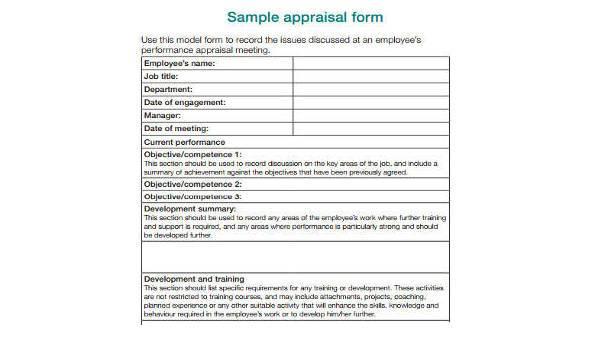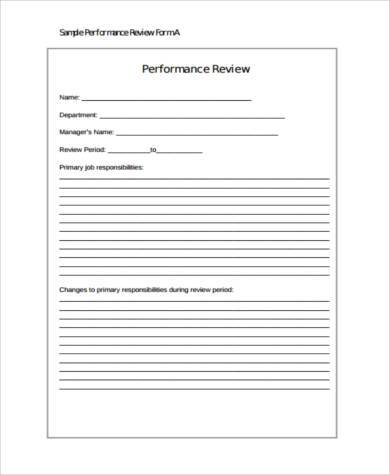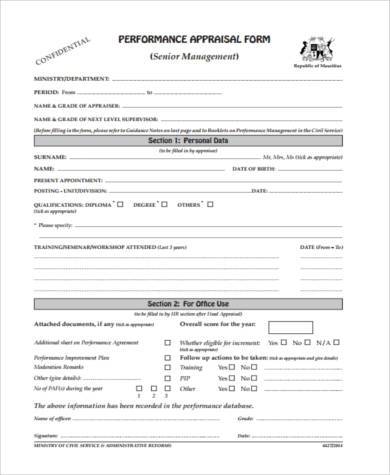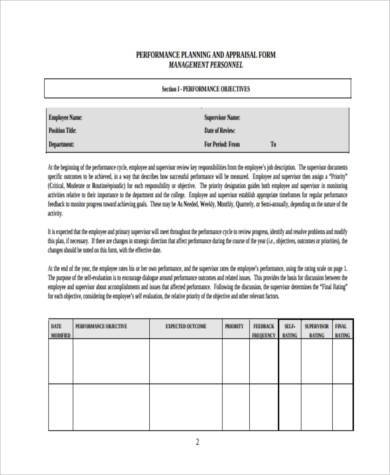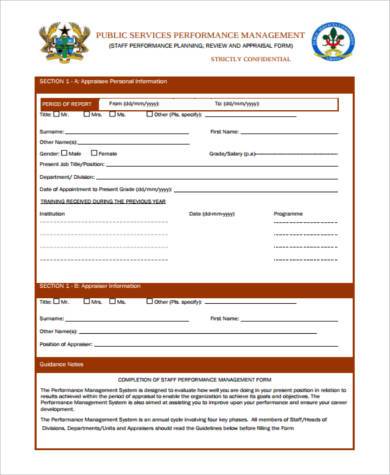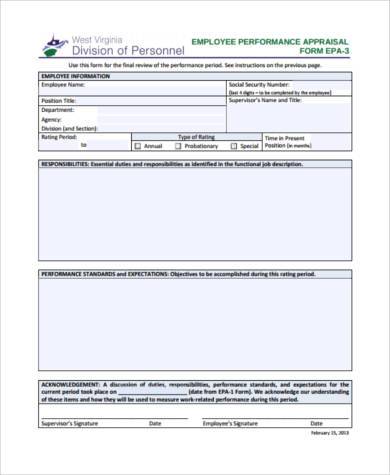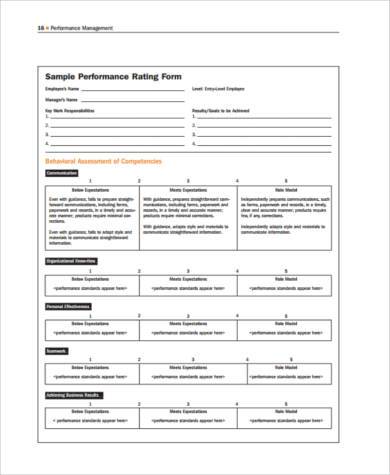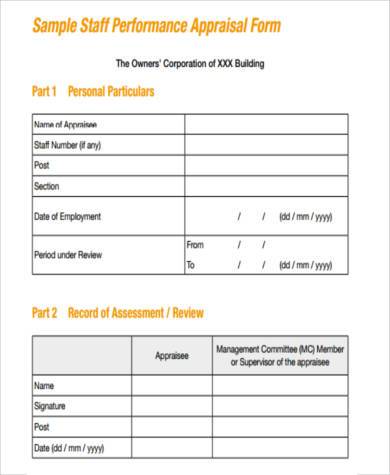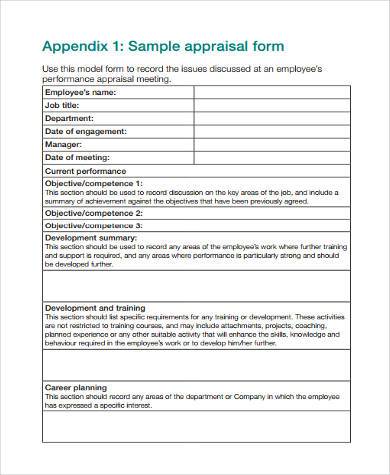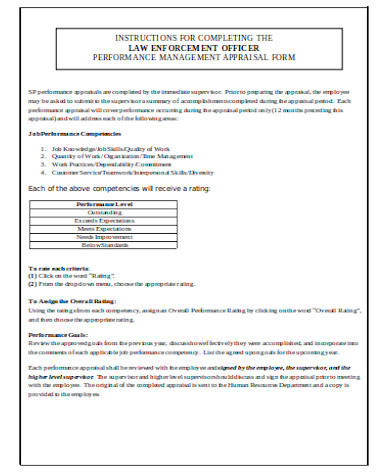Working for an organization means taking on a role, attending to certain responsibilities, and making sure that you and the people you work with see eye to eye. If you are bent on boosting the state of your career, you must see to it that your performance is not only impressive, but also consistent throughout the time you have been employed.
It is standard protocol for an organization to conduct performance reviews, usually through the distribution of Appraisal Forms. These periodic procedures hold a simple purpose: to ascertain whether an employee is doing what they were hired to do in a manner that meets or exceeds the organization’s expectations.
Performance Management Appraisal Form
Senior Management Appraisal Form
Project Management Appraisal Form
Staff Management Appraisal Form
Different Types of Employee Performance Appraisal
Commonly, the strengths and weaknesses of an employee are conveyed to them in detail by their immediate superior during a performance review. Supervisors and managers can opt for simple means in conducting an assessment such as utilizing Employee Appraisal Forms. However, there are also other methods that can be used by a higher-up when evaluating their subordinate.
These are the common types of employee performance appraisal:
- Rating Scale. Similar to how students are evaluated by their teachers, this type of performance appraisal follows a grading system that may be distinct to the organization. Rating scales are usually numerical, with higher numbers equating to good or satisfactory performance, and lower numbers signifying poor or unsatisfactory performance. The numbers are used to rate the performance of an employee in key areas, such as competence, teamwork, etc.
- 360-Degree Appraisal. This manner of reviewing an employee’s performance involves the gathering of feedback. The appraiser or the person assigned to review an employee’s performance holds the task of speaking with the employee’s immediate superior, their co-workers, and their clients or customers.
- Objective-based Evaluation. This is a more clear-cut method of assessing an employee’s performance as it involves setting a specific objective for the employee to fulfill on or before a given deadline.
Employee Performance Appraisal Form
Performance Management Form in PDF
Sample Staff Performance Appraisal Form
Management Appraisal Form Example
General Management Appraisal Form
Preparing for Your Performance Appraisal
The thought of undergoing a performance review can be daunting. However, when you are prepared, you will know what to expect, and the sight of Appraisal Order Forms may not be so pressuring after all.
Here are some points you can take into consideration prior to your assessment:
- Conduct an honest self-assessment. Go over your achievements and the failures you have managed to overcome in the past year. Doing this will help you determine your strengths and weaknesses.
- Make a list of topics you want to cover with your supervisor or appraiser. You will be able to set objectives for the discussion you will have with your supervisor or appraiser when you are aware of your own strengths and weaknesses. These objectives are the topics relating to your work, which you would like to talk about with your superior.
- Prepare for possible disagreements. There may be instances during the performance appraisal that you and your superior will arrive at a disagreement. Prepare to listen to what they have to say, but also know how to respond and explain your side.
- Reflect on your career goals. Consider your future in the organization. Find out if you may need further training to be able to reach such goals. Convey your concerns to your superior.
Related Posts
-
FREE 7+ Sample Supervisor Appraisal Forms in PDF | MS Word
-
FREE 9+ Sample Jewelry Appraisal Forms in PDF | MS Word
-
FREE 6+ Sample Home Appraisal Forms in PDF
-
FREE 8+ Sample Faculty Appraisal Forms in PDF | MS Word
-
FREE 9+ Sample Staff Performance Appraisal Forms in PDF | MS Word | Excel
-
FREE 6+ Sample Auto Appraisal Forms in PDF
-
FREE 8+ Sample Appraisal Evaluation Forms in PDF | MS Word
-
FREE 6+ Sample Customer Appraisal Forms in PDF | MS Word
-
FREE 8+ Sample Appraisal Feedback Forms in PDF | MS Word
-
FREE 8+ Sample HR Appraisal Forms in MS Word | PDF
-
FREE 6+ Sample Annual Performance Appraisal Forms in PDF | MS Word
-
FREE 29+ Sample Appraisal Formats in PDF | MS Word | Excel
-
Nurse Appraisal Form
-
Performance Appraisal Form
-
FREE 10+ Property Appraisal Forms in PDF | MS Word
